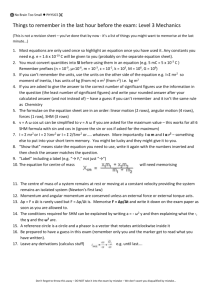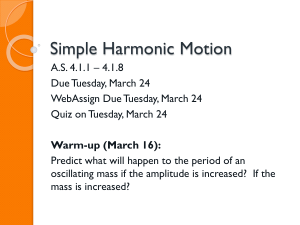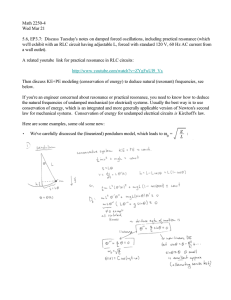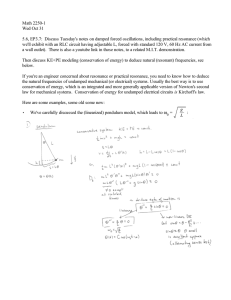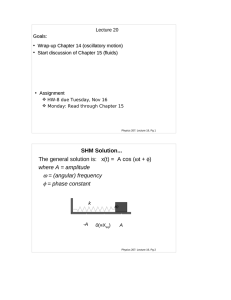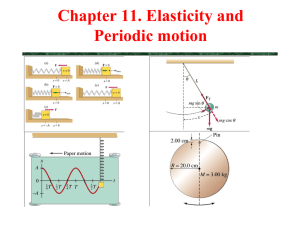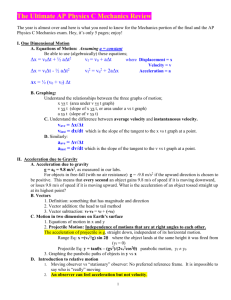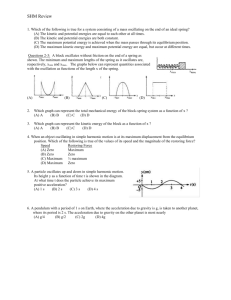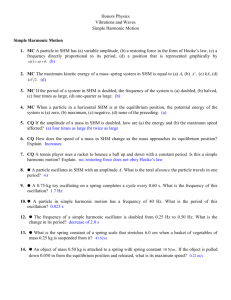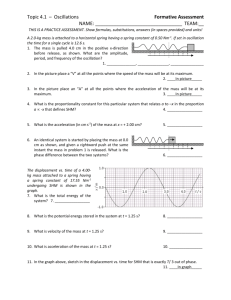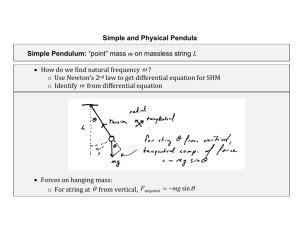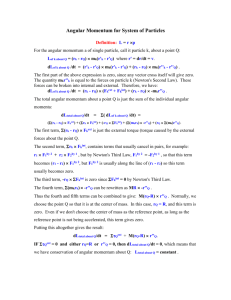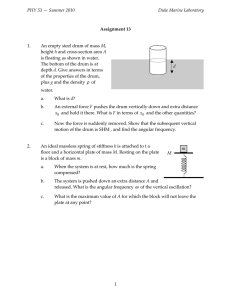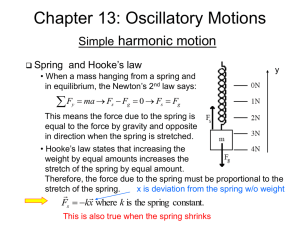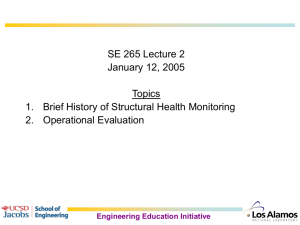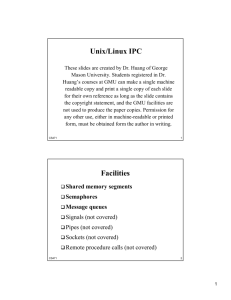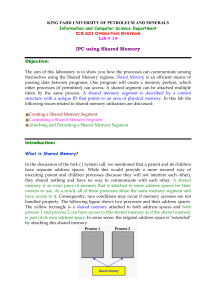Simple Harmonic Motion
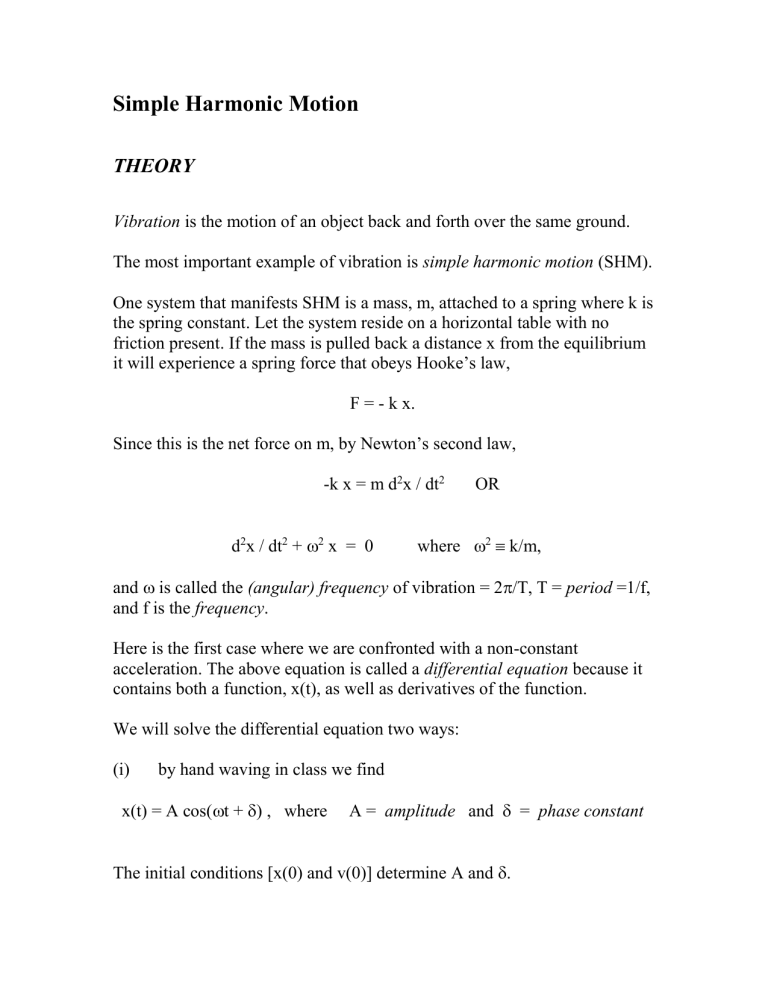
Simple Harmonic Motion
THEORY
Vibration is the motion of an object back and forth over the same ground.
The most important example of vibration is simple harmonic motion (SHM).
One system that manifests SHM is a mass, m, attached to a spring where k is the spring constant. Let the system reside on a horizontal table with no friction present. If the mass is pulled back a distance x from the equilibrium it will experience a spring force that obeys Hooke’s law,
F = - k x.
Since this is the net force on m, by Newton’s second law,
-k x = m d 2 x / dt 2 OR
d 2 x / dt 2 +
2 x = 0 where
2
k/m, and
is called the (angular) frequency of vibration = 2
/T, T = period =1/f, and f is the frequency .
Here is the first case where we are confronted with a non-constant acceleration. The above equation is called a differential equation because it contains both a function, x(t), as well as derivatives of the function.
We will solve the differential equation two ways:
(i) by hand waving in class we find
x(t) = A cos(
t +
) , where A = amplitude and
= phase constant
The initial conditions [x(0) and v(0)] determine A and
.
(ii) using energy conservation and integration.
From before, the elastic potential energy of a mass-spring system is
U = ½ k x 2 .
Therefore, the total mechanical energy of the oscillator is
E = ½ m v 2 + ½ k x 2
Notice, when x = A, v = 0 this gives E = ½ k A 2
Using v = dx/dt and rearranging we get,
dx/dt = [
2 ( A 2 – x 2 ) ] 1/2 or
dt = dx/ (A 2 – x 2 ) 1/2
Integration of the right hand side is cos -1 (x/A) and we get the same x(t) as found above. Note: the constant of integration we denote
and this is added to the LHS.
EXAMPLES
Simple Pendulum
For this system use Newton’s second law for rotation. That is, we sum the torques on m and set that to the moment of inertia of m times its angular acceleration.
After a small angle approximation, one finds the angle obeys the same differential equation as x did for the mass on a spring. Therefore, the system behaves as a SHO. The period is found to be,
T = 2
(L/g) 1/2 , where L is the length of the pendulum.
SHM and UCM
Consider a particle moving in UCM. If you look at the shadow of this particle on the x-axis, the shadow executes SHM!
The angular velocity for the UCM equals the angular frequency of vibration of the shadow.
Driven Oscillator and Resonance
One can apply an additional force to the mass on a spring. Suppose this additional force (called the driving force) has an angular frequency
d
.
It can be shown, by Newton’s second law, that the mass undergoes very large amplitude vibrations if it happens that the driving frequency matches the natural frequency of the SHM,
d
=
√ k/m
This phenomenon is known as resonance . Examples include: breaking a wine glass with sound, the Tacoma Narrows bridge catastrophe, soldiers required to break rank when crossing a bridge, a radio, etc. .
From Webster’s
RESONANCE
![[MATH2019] Final exam notes](http://s3.studylib.net/store/data/025296565_1-0d5b41f3ef39ac8ec6df0bd44c901026-300x300.png)
